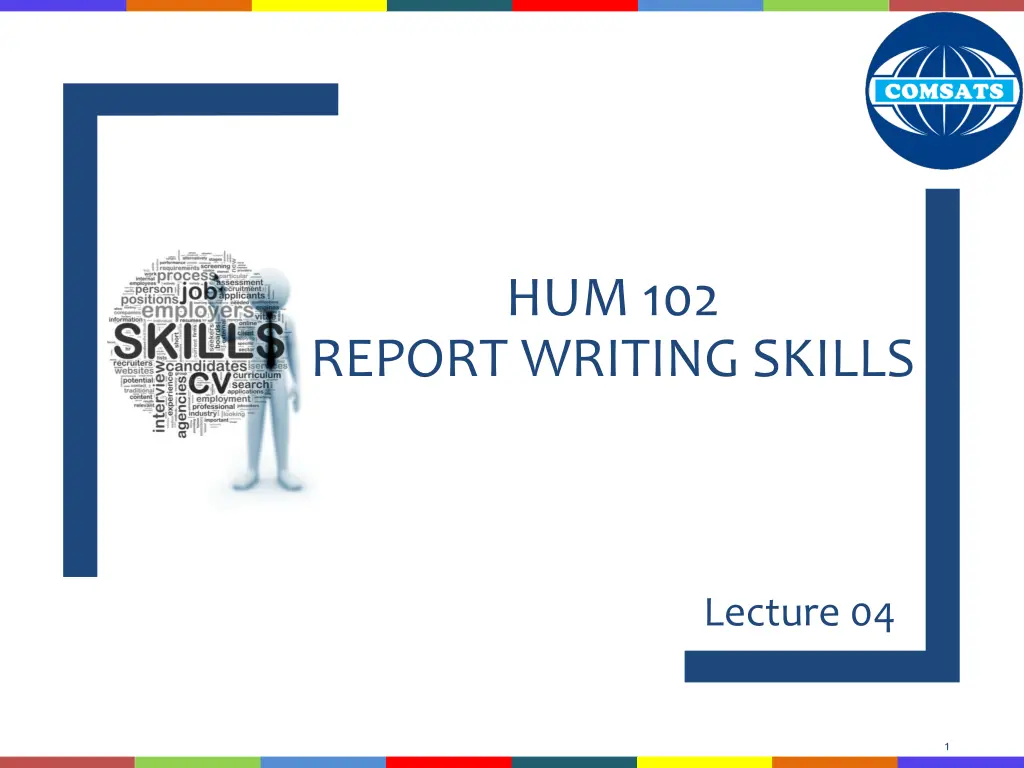
Mastering Report Writing Skills: A Comprehensive Guide
Learn the essential components of effective report writing, including structuring your report, discussions, findings, and conclusions. Discover how to craft insightful analyses and make impactful recommendations. Enhance your report writing proficiency and excel in communicating your ideas with clarity and precision.
Download Presentation

Please find below an Image/Link to download the presentation.
The content on the website is provided AS IS for your information and personal use only. It may not be sold, licensed, or shared on other websites without obtaining consent from the author. If you encounter any issues during the download, it is possible that the publisher has removed the file from their server.
You are allowed to download the files provided on this website for personal or commercial use, subject to the condition that they are used lawfully. All files are the property of their respective owners.
The content on the website is provided AS IS for your information and personal use only. It may not be sold, licensed, or shared on other websites without obtaining consent from the author.
E N D
Presentation Transcript
HUM 102 REPORT WRITING SKILLS Lecture 04 1
Previous Lecture Title Page Executive Summary Table of Contents Introduction 2
Report Structure: Sections Title Page Executive Summary Table of Contents Introduction Discussion Conclusion Recommendations Bibliography Appendices 3
Report Structure: Sections Title Page Executive Summary Table of Contents Introduction Discussion Conclusion Recommendations Bibliography Appendices 4
Report Structure: Discussions [1/3] Discussion explains: What exactly you accomplished? What problems you encountered (status report)? What you saw and did (trip report)? What procedure you followed? What you learned from the task (laboratory report)? What options exist as feasible solutions to a problem (proposal)? 5
Report Structure: Discussions [2/3] Author s reflection on the subject matter Author's expression of his/her own opinions and views Indicates how to provide solution to the problem Good prose style Justified arguments or generalizations 6
Report Structure: Discussions [3/3] To think critically about an issue. To develop creative solutions to the problems. To formulate a deeper, more profound understanding of the problem under investigation. 7
Report Structure: Findings How reliableare the findings? How significantare the findings? 9
Report Structure: Conclusions Conclusions: are logical deductions based on the data in the findings section. are a comprehensive summary of the findings. sum up the main points of the report. highlight the significant elements. relate to the objectives. end with a statement which will lead to the recommendations section. 11
Report Structure: Recommendations Recommendations can be made concerning: the implementation general applicability suitability of findings suggestions of topics for further research 13
How to write Recommendations? Brief write concisely; any reason for recommendation should only be given if necessary. Clear do not be ambiguous as to how the suggestion should be implemented. Precise vague recommendations usually result from insufficient research/analysis. 14
Bibliography or Work Cited All the sources of information are included in the report. Use the standard format: APA/MLA Ensure that all the work you cite in the body of your report is listed in the reference list. 15
Appendices An appendix contains material which is too detailed, technical, or complex to include in the body of the report . Example: Specifications Questionnaire Long complex table of figures etc. Placed at the very end of the report. 16
Conclusions Discussions Findings Conclusions Recommendations Appendices 17






















